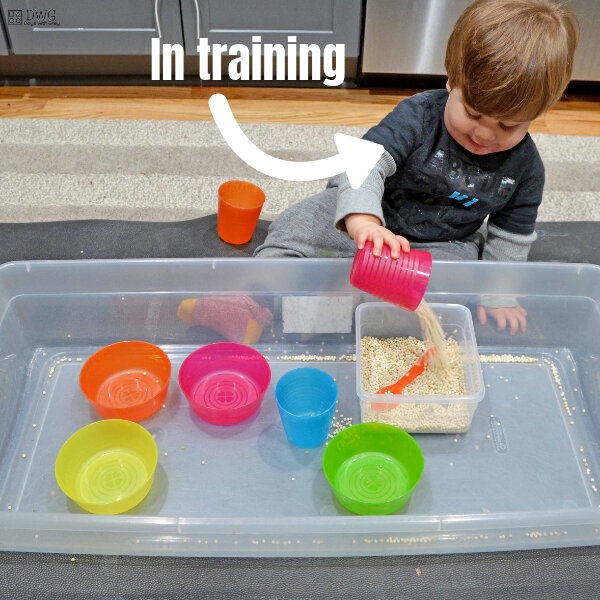Is My Child Having Difficulties Understanding My Sentences?
Sometimes, children do not understand the message behind our sentences. You might notice this if your child doesn’t follow your directions, doesn’t answer your questions correctly, or if they don’t respond at all! We can help children understand our messages by changing how we say them, or by pairing our spoken words with extra supports.
Keep your Sentences Short and Sweet.
Delivering too much information at once can make it difficult for your child to understand your messages. Keep your sentences short and to the point. For example, you could say “go get your cup”. If you are noticing that your child is understanding these short sentences, add a bit more detail. For example, “Go get your cup and your teddy” or, “go get your red teddy”.
Pictures of People, Places and Things.
Take a moment to think of all people, places and things that are important to your child’s everyday life. These can include things like toys, foods, clothing, daycare or school, and family members. Once you’ve collected these important pictures, print them off so you have hard copies. When saying something to your child, point to the pictures to help support your message. For example, you can say “first, we are going to the grocery store, and then we are going to visit grandma”. While saying these words, point to the pictures of the places and people.
Gestures or Signs.
Help support the meaning of your spoken words by pairing them with gestures or signs. There are many different gestures you can use in everyday activities. For example, you could say “can you get me the big box?” When you say “big”, spread your arms out wide to really illustrate the meaning of that word. You could also say “the dog is sleeping under the table”. When you say “under”, move one hand under the other.
Facial Expressions and Body Language.
Facial expressions and body language can help support your message by conveying your feelings. A child might recognize the emotion, and be able to pair the meaning of the emotion with your spoken word. For example, you might tell your child “I am sad because I hurt my hand” while making a sad face.
If you have any concerns about your child having difficulties understanding language, contact us to speak with a speech-language professional today. Speech-Language Pathologists are trained to assess and recognize delays in understanding language, and can offer advice and effective therapy programs to help support your child’s language development.




Rich Payano
Nice
Barcelona News
Your blog is a source of inspiration for me. Indian Cricket
MBBS Cutoff Of Government Medical Colleges in West Bengal
Learn about the competitive MBBS Cutoff Of Private Medical Colleges in Karnataka to enhance your admission chances.
MBBS Direct Admission in Chandigarh
Discover excellent academic programs at Top MBBS Colleges in Himachal Pradesh.
Raja Luck App
Enhance your gaming skills by playing on Raja Luck.
skapa ett binance-konto
Thanks for sharing. I read many of your blog posts, cool, your blog is very good.